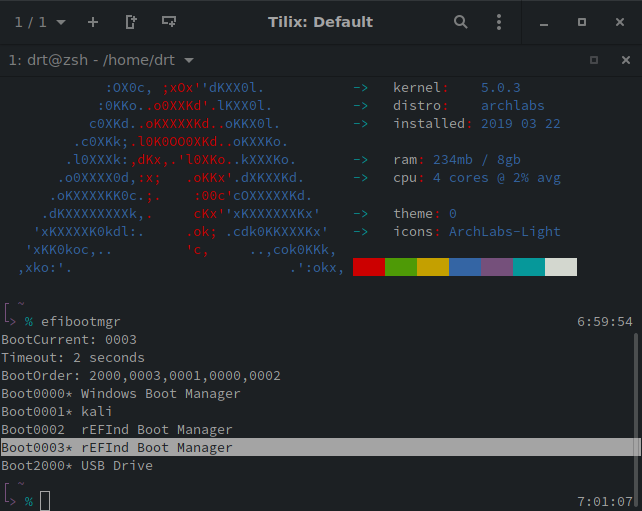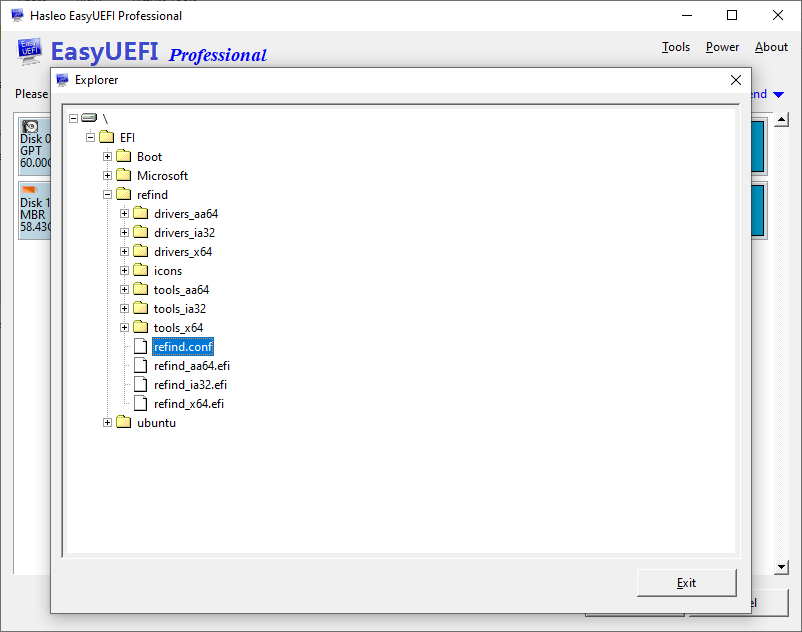

- #UNINSTALL REFIND BOOT MANAGER INSTALL#
- #UNINSTALL REFIND BOOT MANAGER DRIVERS#
- #UNINSTALL REFIND BOOT MANAGER FREE#
Muhlemmer ( talk) 13:11, 19 October 2020 (UTC) The whole new section starting with ✽uring boot, rEFInd can automatically find EFI boot images and Linux kernels« is misplaced. Furthermore, I've removed the recommendation of FS layout and explained better how rEFInd does its job, which gives the admin more flexibility. I've also explained the auto detection system of rEFInd for kernels, initramfs and icons. Charles17 ( talk) 08:02, 13 September 2017 (UTC) I've removed the debianutils section, as it is overly complicated.

It is a user's wiki and helpful contributions are always welcome.
#UNINSTALL REFIND BOOT MANAGER FREE#
Please feel free to edit the wiki articles directly. That being said, I am keeping rEFInd installed only as a fallback in case there was trouble with EFI stub kernel. For my own "dirty hack" I am using the laptop's built-in configuration tool allowing me to go without using efibootmgr.
#UNINSTALL REFIND BOOT MANAGER INSTALL#
Would you still recommend having them all at the root of the /boot directory? Regarding your questions: I cannot say how many users like or dislike genkernel or the make install voodoo. efi applications, like EFI shell, grub, rEFInd, Microsoft Windows, other Linux distros. Please regard a situation where users have several. In the other case, the user will edit exactly this file and ignore the ESP's EFI directory. In the one case, the user will maintain the EFI directory according to a certain standard layout without ever touching /boot/refind_nf. G2boojum ( talk) 21:13, 12 September 2017 (UTC) I fully agree, it is a question of personal preferences and what I said before is my very personal humble opinion. All that said, I'm happy to bow to your opinion in these matters. Are you manually running efibootmgr to add the desired kernel images to the nvram boot list? That's the part of the process (running efibootmgr, or grub-mkconfig, or whatever) that I'm trying to avoid. I'm rather confused by the "dirty hack" that you're using, since I wouldn't think the EFI firmware would pick up those kernels automatically. Charles17 ( talk) 05:50, 12 September 2017 (UTC) I would argue that my proposal is not a dirty hack, but is, in fact, how rEFInd was intended to be used by its author (see, especially the "For Those With Foresight or Luck: The Easiest Method" section). But feel free to add your proposal as an alternative for users who like editing the /boot/refind_nf file and using the kernel's make install command. The article is meant to complement Handbook:AMD64/Installation/Bootloader in accordance with other articles like EFI stub kernel and EFI System Partition. May I regard that proposal a dirty hack? I am using another one but for this wiki article I keep recommending kind of EFI_System_Partition#Standard_layout. Having the kernels in /boot gives up the nice Gentoo logo (at least without some additional nf configuration), but that seems like a small price to pay. Note that this scheme is even simpler than using GRUB, since new kernels dropped into /boot will show up automatically, without needing to run a separate command akin to "grub-mkconfig".

#UNINSTALL REFIND BOOT MANAGER DRIVERS#
If the user has followed the handbook instructions, /boot is the root of the EFI system partition (ESP), so rEFInd doesn't need to install any filesystem drivers to read it. Leave the kernels (and initrd images, if they exist) in /boot, which is where "make install" (or genkernel) is going to install them anyway, and don't bother adding ".efi" extensions to the kernel names.Using rEFInd for kernel management can be so much simpler than what is presented here: This discussion is done as of October 19, 2020.


 0 kommentar(er)
0 kommentar(er)
